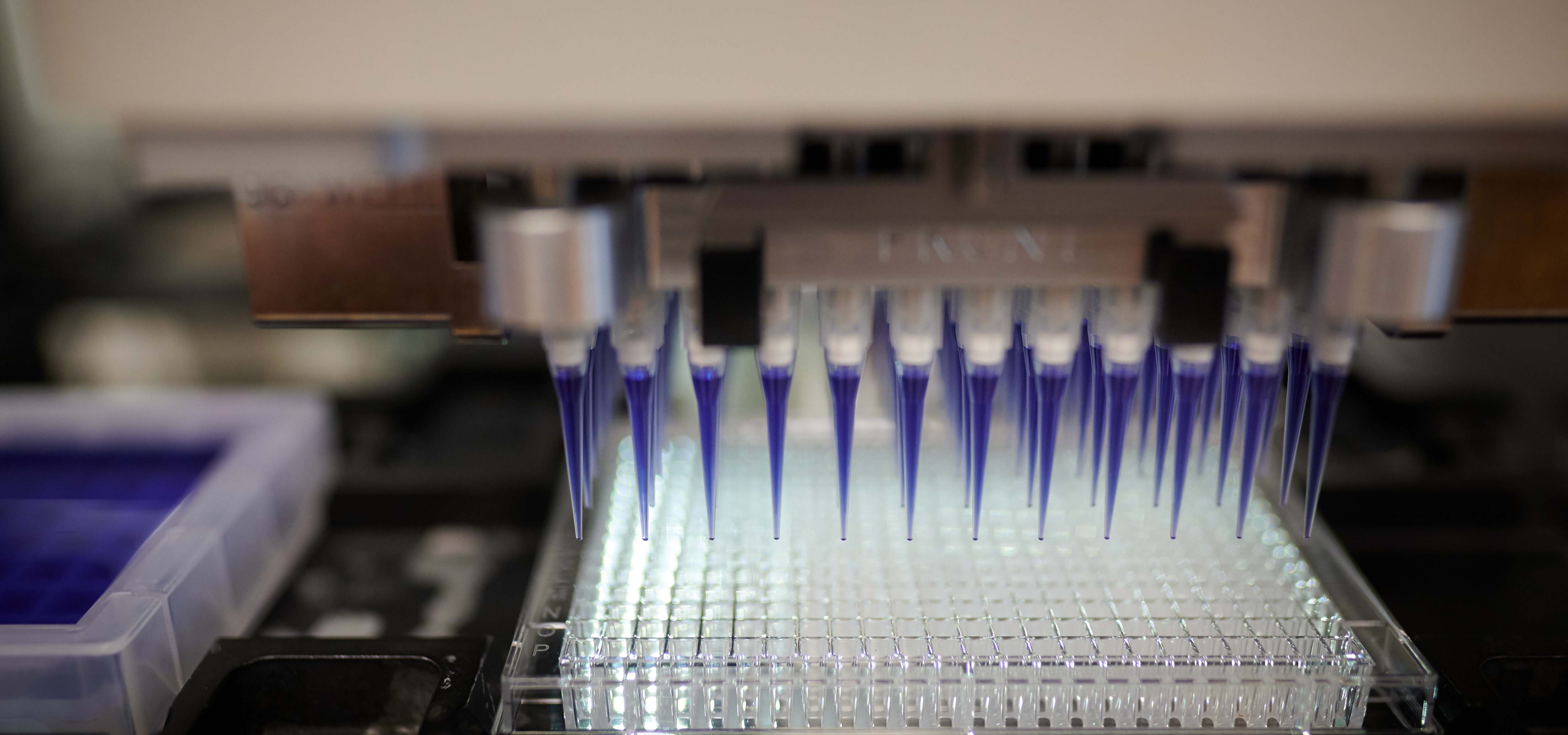Overview
Drug discovery is the process by which potential new medicines are identified. Drugs have a positive impact on a disease by binding to target molecules in the body and changing their functions. Discovering novel drug-like molecules starts with either a target-based or phenotype-based approach. In a target-based approach, one theorizes, based on basic research data, that a drug that binds and interferes with the function of a particular protein should help a disease. After a target is identified, then a drug-like molecule is identified that binds to it and alters its function in the desired way. In phenotypic drug discovery, drug-like molecules are discovered that have a positive impact on a disease model system, like the function or health of human cells in culture.
 The High-Throughput Screening (HTS) and Drug Discovery Core Facility is designed to suit assay validation and screening needs. With our flexible screening schedule and shared resources, we can perform the entire screen for you or share our equipment for your screening use. Our facility maintains a large chemical library and houses multiple liquid handling and assay detection instrumentation on site. Our HTS capabilities extend from 6- to 384-well plates and include almost all detection formats for both biochemical and cellular assays, including absorbance, fluorescence, luminescence, fluorescence polarization, time-resolved fluorescence, FLIPR, high-content imaging, and live-cell detection.
The High-Throughput Screening (HTS) and Drug Discovery Core Facility is designed to suit assay validation and screening needs. With our flexible screening schedule and shared resources, we can perform the entire screen for you or share our equipment for your screening use. Our facility maintains a large chemical library and houses multiple liquid handling and assay detection instrumentation on site. Our HTS capabilities extend from 6- to 384-well plates and include almost all detection formats for both biochemical and cellular assays, including absorbance, fluorescence, luminescence, fluorescence polarization, time-resolved fluorescence, FLIPR, high-content imaging, and live-cell detection.